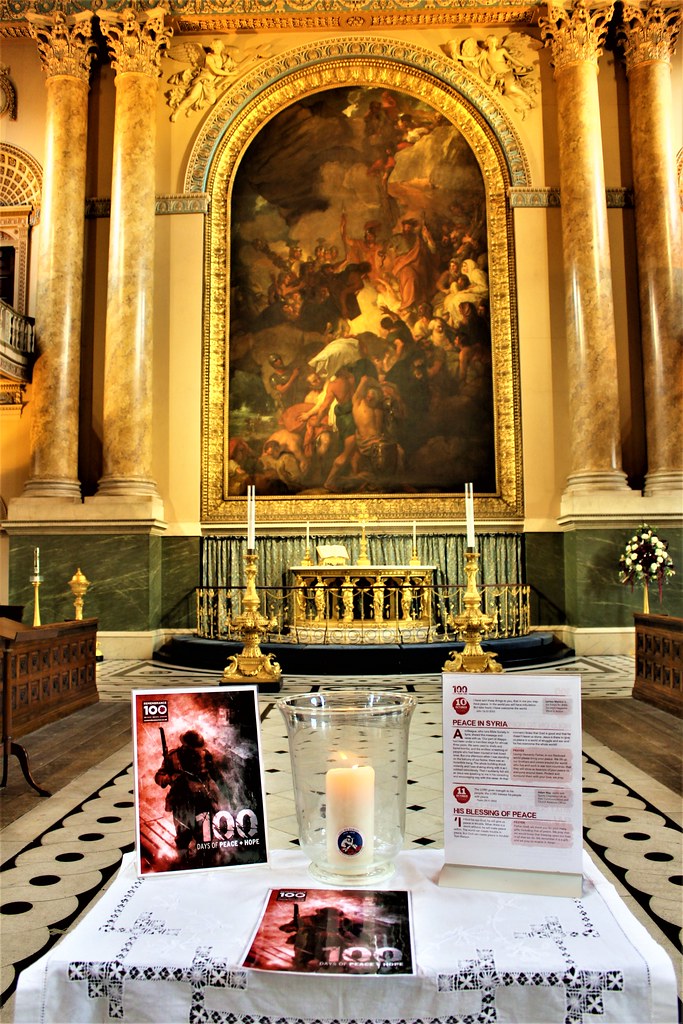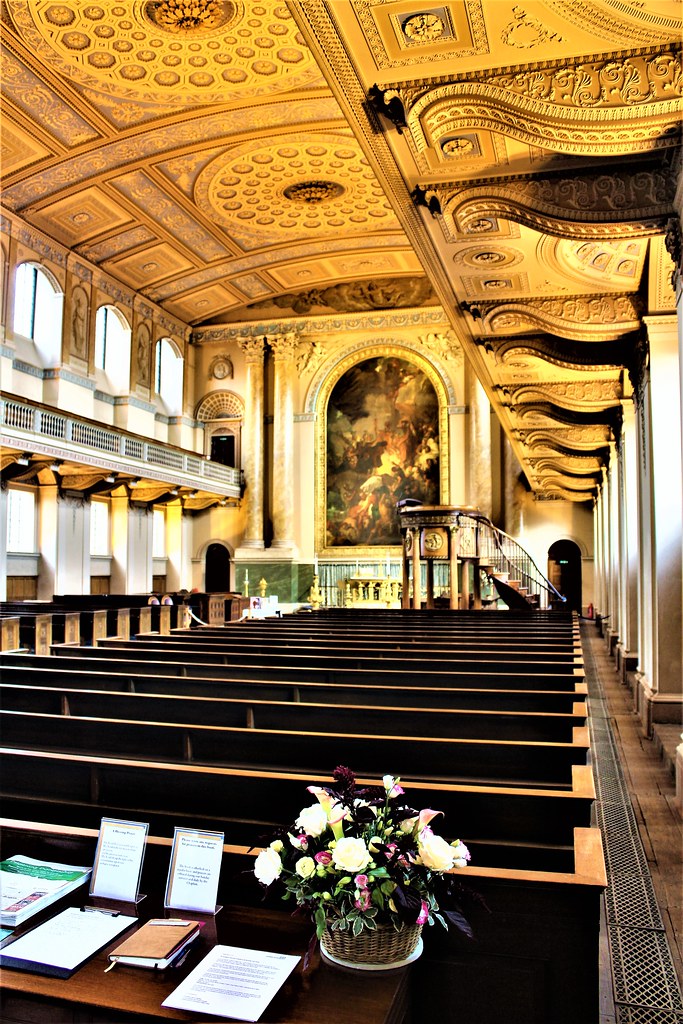Old Royal Naval College, Greenwich, London
Interior of Chapel of St Peter and St Paul, Greenwich, London
This evening, I am reporting on the Chapel of St Peter and St Paul, a stunning building which is part of the former Greenwich Hospital, later the Royal Naval College, London.
This Anglican place of worship benefits from a Baroque exterior and Greek revival interior. The building was completed in 1742.
The extensive complex forming the Old Royal Naval College was built originally as a Royal Hospital for Seamen and was designed by leading English architect, Christopher Wren whose most famous work is St Paul’s Cathedral. The complex comprises four main buildings called “courts” (King Charles Court, Queen Mary Court, Queen Anne Court, and King William Court) the most visited parts of which are the Painted Hall and the Hospital’s St. Peter and St. Paul Chapel aka Old Naval College Chapel.
St. Peter and St. Paul Chapel, a part of Queen Mary Court, was completed 19 years after Christopher Wren’s death in 1742. The Chapel’s present interior dates from 1779–1789, when it was rebuilt to a design by James Stuart after a devastating fire and now ranks as one of Britain’s finest eighteenth century interiors.
Visitors to the Chapel should look out for:
The Franklin Memorial
Take a look to your right when you enter the Chapel vestibule. This is an imposing marble memorial situated to the right on entry. It commemorates Sir John Franklin and the crews of the ships Erebus and Terror who lost their lives in the ill-fated expedition of 1845 to search for the North West Passage. Created by Richard Westmacott Junior.
The Chapel rope and anchor
A ship’s anchor which can be found in the centre of the black and white marble floor. A rope design runs along the edge of the pews. These are just two of many naval themed motifs depicted throughout the Chapel and reflect underlying affinity with seafarers.
The Chapel ceiling
This piece of high quality craftsmanship is probably responsible for the excellent acoustics . It was designed by master plasterer John Papworth in a neo-classical design of squares and octagons. It is plastered in light blue and cream following a Wedgewood-inspired colour scheme.
The Samuel Green organ
The organ at the west end of the Chapel is a fine example of the work of Samuel Green (1740-96), the leading organ builder of his day. It was completed at a cost of £1000 in 1798 and is probably the largest instrument built by Green still in its original position.





Comments
Post a Comment